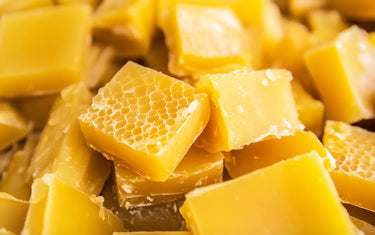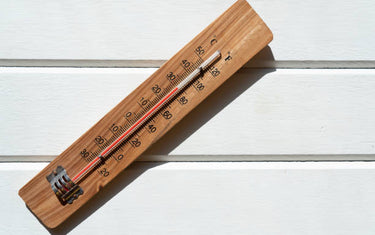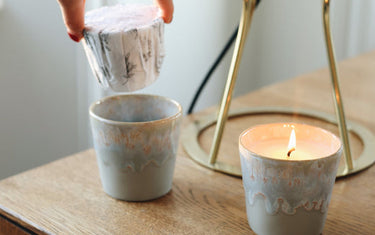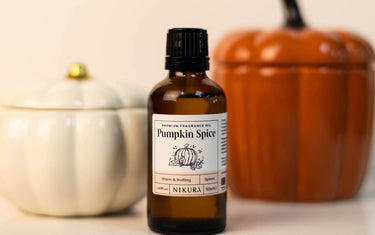7 min read / 22 June 2025 / yasmin sharp
The Wonders of Beeswax: An Introduction to Its Many Uses
Explore beeswax's remarkable properties, from its ancient history and natural production process to its modern applications in skincare, candle making, and sustainable home solutions.
Share this post
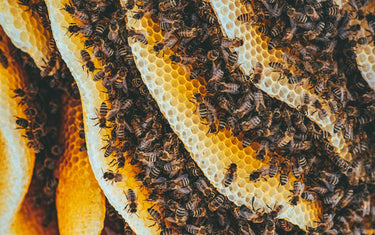
While it can sometimes be taken for granted, beeswax is a remarkable gift from nature that humans have utilised for thousands of years.
You may not even be aware of how often you come into contact with it, as beeswax is so integrated into our daily lives.
The versatility of beeswax can offer countless health benefits, while it is a favourite amongst candle makers, there are also countless ways you can use it around the home.
We’ve put together a beginner’s guide to beeswax, explaining how it is made, how it has been used through the ages, its potential health benefits and more.
![]()
What is beeswax?As the name suggests, beeswax is a natural wax produced by young honeybee workers. The substance is used to create cells, which we more commonly associate with the hexagonal honeycomb design. Beeswax is made up of more than 280 compounds, with the most notable being monoesters (45-55%), hydrocarbons (15-18%), free fatty acids (10-15%), diesters & complex esters (8-12%), hydroxy monoesters (4-6%) and free fatty alcohols (1-2%). However, depending on the bee type, conditions and location, the compositional makeup can vary. |
How is beeswax made?
When worker bees are aged between 12 and 20 days old, they produce four pairs of salivary glands that are located beneath their abdomens.
This gland can convert sugar extracted from the honey in the hive into a waxy substance, which is then deposited as flakes into the abdomen.
Other bees then collect these flakes and start to chew them, using the saliva to build the honeycomb.
These are then used to store honey, and pollen, and serve as a breeding ground for bee larvae.
Wax discs are attached to the sides of the honeycomb cells by worker bees to form hexagonal cells.
Pollen and propolis get into the wax when the honeycomb is being made, which is what creates the light yellow colour tone.

What are the physical properties of beeswax?
The melting point of beeswax sits somewhere between 62°C and 65°C, which is relatively low compared to other types of wax. This allows it to be melted quickly, whilst it also remains solid at room temperature.
Beeswax is quite dense, which is why it is so often used as an ingredient in lotions and creams. This creates a smooth, creamy texture that is easy to spread and can easily be absorbed into the skin.
The water-resistant properties of beeswax is another plus, which makes it ideal for use in lip balms and salves that help to lock in moisture and prevent dryness.
What are the different types of beeswax?
There are three main types of beeswax:
- Yellow beeswax: This is the natural, unrefined beeswax that comes directly from honeycomb produced in the hive.
- White beeswax: If yellow beeswax is filtered or bleached it then becomes white beeswax and is often used in cosmetic formulations and pharmaceutical products.
- Beeswax absolute: Melting yellow honeycomb with a food grade solvent produces beeswax absolute which is typically used as a perfumery ingredient.
Uses of beeswax vary depending on the application, although raw yellow beeswax remains the vital ingredient for everything that comes after.
What is the history of beeswax?
The history of beeswax goes back thousands of years, with reports of it being used as a tooth filling 6,500 years ago during the Neolithic period (New Stone Age). [1]
While beeswax is often used as an ingredient in cosmetic products, historical beeswax uses included applying it as a nail polish in Ancient China way back in 3,000 B.C.
Evidence suggests that around 8,000 years ago, Ancient Egyptians were keen beekeepers, using the extract beeswax for a host of applications.
This included hair products, solid perfumes and as part of the embalming process.
Archaeologists have also found traces of beeswax in Roman ruins and wrecked Viking ships.
Raw beeswax uses also extend to something called ‘lost wax casting’ which involves using the substance to sculpt the shape of a product.
Clay is then added to the mould and the item baked at a certain temperature in the oven.
The wax melts away to reveal a solid clay mould that liquid metal was then poured into – a process that is still used in some parts of the world today.

What are the benefits of beeswax?
There are a long list of beeswax benefits we could include here, but focussing specifically on the health benefits, it has the potential to:
1. Enhance skin moisture
Using beeswax for skin can help to boost moisture and hydration levels. This is why it is often used as an occlusive in skincare products, which can help to create semi-occlusive skin barriers to reduce transepidermal water loss. [2]
It can also help to lock in hydration, working as a humectant and emollient to soften and soothe skin.
2. Treat common skin conditions
Using a mixture of beeswax, honey and olive oil as a skin treatment has been found to be helpful in calming eczema, psoriasis and nappy dermatitis. [3]
Each substance was used to test the growth of Staphylococcus aureus and candida albicans isolated from humans.
Researchers concluded that the growth of bacteria that causes skin conditions could be stopped by using honey mixtures.
3. Work as an anti-inflammatory and pain relief agent
Beeswax benefits have also been put to the test to see if they can provide pain relief and anti-inflammatory properties, which has produced some promising results.
For instance, one study highlighted that a mixture of beeswax alcohols proved helpful in reducing inflammation caused by osteoarthritis. [4]
The human trials lasted for six weeks, with researchers concluding that arthritic symptoms were improved by the tablets.
4. Reduces the appearance of acne
One of the most common uses of beeswax is as a home remedy for acne. This is because it contains antiseptic and anti-inflammatory properties and the presence of vitamin A also makes it an effective natural treatment for acne. [5]
Its moisturising abilities help to keep skin soft to help users retain softer, smoother skin after acne has been removed.
5. Relieve stress and promote relaxation
Beeswax is a popular choice for people who enjoy aromatherapy, as it gives them a natural alternative to paraffin candles.
When burned as a pure beeswax candle it produces an earthy and sweet aroma that creates a calm and serene atmosphere.
It blends very well with a wide range of essential oils, making it the perfect base for a variety of candle types, as well as wax melts.

Beeswax environmental and sustainability considerations
Because beeswax is a natural product it is important to consider any environmental and sustainability factors that can affect its survival.
Bees are crucial to sustaining our ecosystem, helping to pollinate flowers and trees, which helps to sustain the lives of other insects.
This continues up through the food chain to include birds, bats and mammals, and their absence would severely impact our food supply and health.
If you are buying beeswax or products that contain it, look for items that use ethical and sustainable production methods.
This includes use of sustainable beekeeping practices to ensure bee hives are protected, and the protection of wild habitats.
The manufacturing process of unsustainable products can also have a negative impact on the environment.
Products that use non-toxic and biodegradable ingredients are preferable, along with those that rely on renewable energy sources and ethical waste management.
What else is beeswax used for?
While beeswax has a lot to offer our health, there also lots of other uses for pure beeswax:
- Easily craft candles and wax melts using beeswax, which offers an eco-friendly alternative to paraffin wax, and it blends perfectly with all kinds of essential oils and fragrance oils.
- Make your own lip balm with beeswax to lock in moisture, which is ideal for autumn winter periods when the temperature is lower and wind speeds higher.
- Create a homemade body butter with just a few simple ingredients like vitamin E oil, coconut oil, shea butter, sweet almond oil and white beeswax pellets.
- Waterproof and protect your footwear by using a cloth to wipe some beeswax onto the shoe before blow-drying to melt it into the material.
- Condition an old chopping board by combining beeswax with mineral oil and applying it to the board to add moisture and protect the wood.
- Coat your work tools with beeswax to slow down the ageing process and protect them from rusting and general wear and tear.

Final thoughts
Whether you are using beeswax for skin benefits, as part of a candle recipe or to protect various items around your home, there is more than meets the eye when it comes to this humble substance.
Using it helps to keep us connected with nature, although there are ethical and sustainable considerations to ponder when it comes to the products we choose.
There’s a reason it has remained such a vital ingredient over the course of human history, so as long as we respect its source, we will be able to continue relying on it for many more years to come.
[1] Federico Bernardini et al. (2012) Beeswax as Dental Filling on a Neolithic Human Tooth https://journals.plos.org/plosone/article?id=10.1371/journal.pone.0044904
[2] Yvonne Nong et al. (2023) A review of the use of beeswax in skincare https://pubmed.ncbi.nlm.nih.gov/36999457/
[3] Noori S Al-Waili (2005) Mixture of honey, beeswax and olive oil inhibits growth of Staphylococcus aureus and Candida albicans https://pubmed.ncbi.nlm.nih.gov/15777988/
[4] Roberto Puente et al. (2014) Evaluation of the effect of D-002, a mixture of beeswax alcohols, on osteoarthritis symptoms https://pubmed.ncbi.nlm.nih.gov/24648802/
[5] Vijay D Wagh (2013) Propolis: A Wonder Bees Product and Its Pharmacological Potentials https://pmc.ncbi.nlm.nih.gov/articles/PMC3872021/



